“The important thing is not to stop questioning. Curiosity has its own reason for existing.” ― Albert EinsteinI can’t remember where I heard it, but it’s a great aphorism. Be relentless about the goal, but flexible about the methods. Another way to say it is: Be relentless about the what and the why. Be flexible about the how. We walk around with these axioms in fundraising. Consider: “Always call to get the visit.” And “Always ask for money in person.” Well, we’ve been presented with an opportunity to question these methods and how we do fundraising. I did a webinar recently about Frontline Fundraising in a Virtual Environment and I shook things up by confessing that I *gasp* didn’t often call to get visits. Folks were very interested in this maverick idea. It’s not really that maverick. It’s efficient. I send individual, personalized emails to the donors I would like to meet with and let those responses come in for 24-48 hours or until I have a full schedule. Of course, those emails are NOT graphics heavy, HTML promotional emails sent in bulk. They are personal notes from me to a specific donor. And if I have some donors who I need to meet with and I know that I don’t have an email for them or that they don’t check email often, I will call them. But, mostly my schedule fills right up without having to drudge through calling a list. I can put my energy and effort into fostering great conversations when I meet with them rather than on getting the visit. And of course, the meaning of the word “visit” has changed drastically in just a few months. So many metrics systems for fundraisers see an in-person visit as the gold standard. Of course, that’s true that in person interactions cement relationships in a special way. But, if we believe that other communication methods don’t have the power to significantly move relationships forward in a meaningful way, we are fooling ourselves. Furthermore, we hamstring our own efforts in this new reality. Even though many states are “re-opening”, the virus is still a real threat, especially to those over age 55. That’s an age group that comprises a mighty portion of our non-profit donors. In-person visits and events will not be a viable, “normal” option for a long time. A commitment to metric systems that reward in-person visits only will cause fundraisers to be frustrated and leave and campaigns to fail. Zoom and other video-conference technologies is only a sliver less effective as an in-person visit. And nearly everyone is open to trying out this new way of connecting right now out of necessity. But, let’s be clear: phone calls are also meaningful too. Personalized video and virtual events are fast becoming highly useful tools in the connection toolkit too. Anything that moves the relationship forward connecting the donor to mission is the goal. The goal is connection. Be relentless about the goal. The medium is the how. Be flexible about that how. Generally speaking, fundraising is not considered a creative profession. I disagree. In fact, I feel maintaining a creative approach to methods is essential as we face new challenges in any profession. We must remain perpetually curious as to what works. Let me know what you think in the comments. And subscribe to my FUNdraising Friday newsletter to keep the conversation going. PS - If you liked this post, you might also like these:
PPS - I hope you’ll continue the conversation by subscribing to Real Deal Fundraising. When you subscribe, you’ll get my FUNdraising Friday emails, which includes the best articles on fundraising, productivity and cool stuff every week. The whole thing is weekly curated awesomeness as well as freebies like webinars, instructional videos, and whatever else I can put together to be helpful to you! The legendary fundraiser, Jerold “Jerry” Panas, passed away in July 2018. I feel so tremendously lucky that I got to hear him speak in 2014 at a statewide Association of Fundraising Professionals event here in Mississippi. He had a salt-of-the-earth, no-nonsense style that was very attractive and inspirational. His books are wonders of pith and restraint. My favorite is “Asking: a 59-Minute Guide to Everything Board Members, Volunteers, and Staff Must Know to Secure the Gift”. It’s a 108-page crash course in fundraising, easy to read, and highly quotable. As the fundraising world adjusts to the new reality of the pandemic, I asked myself what Jerry would be advising us to do right now. Wondering how he might approach it, I flipped through my much highlighted and underlined copy of "Asking" to find out. I felt I should remind all of us of these timeless truths from a master of our profession. Here are 8 amazing quotes about the practice of fundraising that I found highly relevant to our current situation: “What I’ve discovered in all my years of fundraising is that it almost doesn’t matter how you ask . . . what is important is that you ask. Just do it” (p. 11)I’ve already answered the question of “To Ask or Not to Ask?” in this post. I love that Jerry agrees with me. Fundraisers are not hired to raise money. We are hired to ask for money. So, we must find effective ways to do that and not let our discomfort or ego get in the way. “Keep in mind that men and women don’t want to give money away. They want to invest in great causes, in bold and exciting dreams.” (p. 12)Don’t Jerry’s quotes make you want to whoop and shout “Amen!”? Fundraisers can only go so far if there is not a bold and inspiring vision coming from the very top visionary leadership of the organization. Create something folks want to invest in. Right now, that may mean emphasizing how important your mission still is, despite coronavirus. Or you may need to switch to relief fundraising to help those you serve directly. “Integrity is the mightiest weapon in the fundraiser’s arsenal – more important than the campaign literature or anything that is said. Its power is explosive. Integrity alone is no assurance of getting the gift. But without it, you can’t even begin the journey.” (p. 20)I’ve written about integrity as an essential quality for a fundraiser last week and back in 2017. Find your deep connection to the mission of your organization or, by golly, go work somewhere else. That belief in mission will radiate realness from you and your donors will feel it and respond to it. “Work hard at putting people completely at ease and making them feel important.” (p. 48)This is the essence of quality cultivation conversation in one brief sentence. (Didn’t I tell you Jerry was pithy?) This advice can apply as easily to Zoom and telephone conversations as it applies to in-person visits. “People don’t care how much you know until the know how much you care.” 55Lead with care for people. Start with inquiring about the health and welfare of your donors and their family. Then move to expressing your care and concern for those your organization serves. If that caring is communicated effectively and with integrity, you are only millimeters away from a gift. “Lucky you. You are a fundraiser. Some shy away. Some are afraid. Some say they don’t like it. You know better. You are, in your own special way, helping to change a corner of the world.” (p. 77)We must remember the worthiness of fundraising as an endeavor if we are to survive and thrive in the non-profit world during this difficult time. Connect to that broader mission and be proud of it. I wrote a similar post here. “Giving up is the ultimate tragedy. Failure is not the crime – low aspirations are.” (p. 79)When I think about all the challenges that history has brought to those going before us (wars, disease, genocides, massive social change, etc.), I connect to the fact that we must endure. The first organized capital campaign (for the YMCA) happened during World War I and the Spanish Flu Pandemic. Harvard University embarked on their first endowment campaign in 1919, just after those two pivotal events. The American Red Cross had their first successful multi-million campaign during World War II. We can do this. “In all you do, act as if it’s impossible to fail.” (p. 88)Amen, Jerry! Our mindset largely determines how far we can go. What I see right now is a firmly 20th century mindset is dying, and organizations are being forced into a fully 21st century mindset. Organizations who have a scarcity mindset are already cutting revenue-generating staff at the mere anticipation of challenges. Institutions that have truly made the switch to a 21st century, abundance-oriented mindset will find a way to function in this new reality, as Jerry says, “as if it’s impossible to fail.” What's your take? Do you agree with Jerry or feel his lessons aren't applicable to the current moment? What's your favorite book of his? Comments and questions are, as always, welcomed and encouraged! Cheers, PS - If you liked this post, you might also like these: PS - If you liked this post, you might also like these:
PPS - There's only 12 Days left to join my new course, All-Star Annual Giving. Registration is open! All-Star Annual Giving is a fully online 12-week course with 9 modules covering all areas of annual giving strategy and execution. If you want to roll into the semester with a fully-fledged plan to raise more money than you've ever raised before in your annual giving programs, you need to be in this course. We like choices, right? At any given coffee shop, you get to be king (or queen) of the world for a moment as you decide whether you want coffee or tea, what size, what type of roast, caffeinated or decaf, and more. Malcolm Gladwell in his TED talk on “Choice, Happiness, and Spaghetti Sauce” confirms the link between customization and happiness. We are happier when the market provides us with “horizontally segmented” choices: like dozens of varieties of spaghetti sauce: spicy, chunky, thin, with cheese, etc. Clearly, we should be providing the same buffet of options for our donors, right? Long drop down lists of designations on our website? Eight different ask amounts on our direct mail reply cards? Won’t this make our donors happy? I would argue that it will not make them happy. And on top of that it will hurt results for our mission. Here’s the difference between endless varieties of spaghetti sauce and giving: The donor sees you and your fundraising materials as ambassadors to the mission of the organization. Donors are looking to staff to inform them of the needs of the institution and its priorities. If you provide so many choices (in both ask amount options and designations) the message the donor receives (consciously or not) is that it does not matter how much I give or what I give to, therefore it does not matter THAT I give at all. Having umpteen varieties of spaghetti sauce does not communicate a subtext that spaghetti sauce is unimportant. But, by giving an overabundance of options to donors, we unfortunately communicate that our missions are not important. Let me restate this to make it clear: If you present a range of ask amounts options that too wide and varied, the donor will feel no urgency to act because he or she has no guidance as to how much the organization needs at this time. If you present a list of designations that is too long, it communicates that the organization does not have a clear set of priorities. Furthermore, if you do not do the legwork to write a customized letter with a targeted appeal for one designation with tailored ask amounts, the donor learns that you do not KNOW them and therefore you don’t value their contributions. If you’ll take any amount for any fund, why bother giving any amount for any of your funds. Here’s an example of the reply cards sent out the year before I arrived at one of the previous institutions I worked for: Too many choices of ask amounts. Also, the choices were static not variable text ask levels (meaning all the donors got the same list of choices). The $1,000 starting ask was just high enough to scare away modest donors and low enough to insult those with high capacity. This mailing should have been a breakout success since it was a centennial mailer. As it was, the results were less than lackluster. Also, all of those designation choices make it seem like the college didn’t care where you gave just that you gave something. This is true for many colleges and universities who are focused on improving alumni participation rates. (For the record, there is nothing wrong with this as a pitch. The problem is most organizations operate on that assumption without informing donors that what you need is participation. Be clear.) However, if what you want is to guide the donor to increase their commitment to the institution, a broad swath of designations won’t work. They want to know that you know their priorities and the priorities of the institution. Match those with a clear case for giving and they will send in checks. See, if you really listen to Gladwell's TED Talk, you would see that Howard Moskowitz (the guy who "discovered" horizontal segmentation and thereby is responsible for dozens of varieties of spaghetti sauce) didn't exactly advocate for countless choices. (In other writings, Gladwell discusses analysis paralysis, a condition where too many choices makes deciding impossible.) Moskowitz saw in his research that people's preferences "clustered" around 3-4 varieties of spaghetti sauce. There is a happy medium between no choice and too many choices. It's Goldilocks. Not too many choices, not too few. I call this the principle of limited choices. Knowing this, here’s how I modified the reply cards during my first year at this institution. Don’t you feel calmer looking at this card? As a donor, you still have choice available but you understand clearly the hierarchy of the university’s priorities and a sense of the level of gifts that the institution wants to receive.
Behind the scenes in the production of these letters, there is a segmentation strategy at work which customizes the letter content and ask amounts to the donor, but what the donor feels is clarity. Upon implementing this more streamlined system, the average gift given through direct mail went from $118 to $149 and the response rates increased from 0.36% to 0.85%. (This was a large state school with lots of non-donors.) The mailings garnered over $41,000 more than the centennial mailer sent the previous year. The principle of limited choices, combined with smart segmentation is powerful stuff. Confused donors don’t write checks. Give them a well-constructed ask and a little direction and you’ll do much better. Don’t spoil your donors for choice. How many ask amounts do you offer in your solicitations? How many designations do you promote as choices? Comments and questions are, as always, welcomed and encouraged! Cheers, Jessica Cloud PS - If you liked this post, you might also like these:
PPS - If you found this article helpful, please comment and let me know. Also subscribe to Real Deal Fundraising so you don't miss a post! You'll get my guide to Call Center Games for Free! An alternate title for this post could be “How I was able to coach my daughter to complete her raffle ticket sales for dance in 30 minutes”
I had no idea it was coming but my daughter left her acrobatics class with an envelope informing us that we had to sell 20 raffle tickets at $2 each. My family has a lot going on and I wanted to finish this project quickly and simply. But, I also wanted her (at age seven) to take responsibility for this project and learn something from it. We discussed it on the way home and I had her practice a “pitch”. It was simple: “Would you like to support my dance school by purchasing a raffle ticket for a chance to win $200 for only $2?” By the time we made it home, she had it nearly memorized. Then I had an insight! I would film a short 30 second video of her saying the line and then doing a backbend. Then I would post it on Facebook so friends and colleagues would see it. We had commitments for the entire batch and then some in about 30 minutes! We had to pick up another 20 tickets today. There are 3 reasons that I think this little project worked so well: The right audience I’m pretty active on Facebook and I often post videos of my kids and their accomplishments. So, my daughter had a kind of fan club already ready to be interested in whatever she’s doing. (Don’t worry. I am super careful about my privacy settings.) The right medium I could have walked around the neighborhood with her or had her ask people at church to buy a ticket, but that would have taken all week probably. I’m already connected on Facebook to everyone from the neighborhood and church anyway. So, this was perfect as an initial step. A soft ask first on Facebook and if we need to go to a harder sell, we could later. The right messenger Coming from me, it would be people doing me a favor. That’s not as compelling as supporting a very cute little girl who just learned to do a backbend and delivered her fundraising pitch perfectly on video. Next time you have to do a fundraiser quick for a specific purpose, consider seriously what the best niche audience is, where the best place to meet them with the pitch is (medium), and who is the best person to do the asking. If you get these three things right, you can raise the funds and raise them quick. Writing a fundraising letter is tough. Making it sound original and compelling is even tougher. Sometimes you can become stuck, too afraid of writing something that is stale and boring to get anything done. If this sounds like you, you have DMWB: Direct Mail Writer's Block.
Here's 5 steps you can take in about half an hour to break through your writer's block and get a draft completed ASAP: Step 1: Understand that some words are better than no words. The most important thing about fundraising is THAT you ask. Sending some mediocre letters out will generate more money than sending zero perfect letters out. Once you realize this, it is a liberating feeling. Something is better than nothing. So, don't worry so much about it being super-compelling and perfect at this point. Step 2: Find a white board (preferably a big one) On the top of this whiteboard, write what you are raising money for. This might be "OPERATING FUNDS" or "SCHOLARSHIPS" or something else. Now go one level deeper and take that (in just a few words) to what it means for people. How will lives be changed because of raising money for this designation. So, it might say, "Funds to allow more students to study abroad", "more meals for the homeless" or "students able to graduate with less debt". Next, you need to make a short list of 3-5 possible signatories for your letter. Do this step even when you think you've already decided who will sign it. Sometimes a traditional "dean's letter" or "president's letter" isn't the way to go. The best letters I've ever written were signed by students, the recipients of the support. Step 3: Generate reasons to give Add a list of 3 EMOTIONAL reasons that your constituents should want to give and 3 ANALYTICAL reasons that they should give. You need a mix of both of these. Most people tend toward one or the other. For example, I'm wholly analytical. I like to know things like the percentage of the cost of an education that's covered by tuition. I like to know about challenge grants and alumni giving percentages and whatnot. The data makes a rational argument to my mind and that style is much easier for me to write. If you are like me, you're not great at coming up with the emotional reasons to give, but an exercise like this forces you to work with both kinds of case making. The emotional reasons usually include a story of a grateful recipient of the support and can include nostalgia for the organization or pride in past work that the donor participated in. Step 4: Evaluate Based on what you see on your whiteboard so far, can you take the story or voice of one of those possible signatories and work in several of the analytical AND emotional reasons to give in one letter? (If yes, go to Step 5.) If no, return to the top of your whiteboard. Do you need to re-address what you’re fundraising for or do you need signatories with more authority or better personal stories? Step 5: Write without self-censoring At this point in the process, you have a focus for your pitch (your designation), a signatory, emotional reasons to give, and analytical reasons to give. Now, get out of your own way and WRITE, without self-censoring. Don't judge. Just get enough text down in written form. Later, with the magic of cut and paste, you can remove, move and juggle all the juicy bits of language. But you can't get to that point until you generate all the phrases and sentences. Don't forget to think about customizing the language for your different segments along the way. This is the best method I've used for snapping out of a direct mail writer's block: get your psychology straight, focus on what you are raising money for, the reasons to give and how that matches with who should sign the letter. Then get out of your own way and get it all down in words. Happy writing! If you try this, let me know how it works out for you. Among office workers, fundraisers are some of the toughest folks out there. #1 you have to develop the gumption to ask on a regular basis and #2 you get told “No” a lot. If you’re doing it right, you get told no more often than yes, a good deal more often. Lastly, fundraisers have to do this knowing that most of our organizations have persistent need and you’ll be asking year after year. Even if you finally complete a campaign or finally raise an endowment, there are always more people to help and more programs to create.
Is it fun to get told "no"? Nah, but what it does for fundraisers is builds resiliency. Fundraisers become warriors. They take their mission out there and champion it no matter the cost to their own egos. For example, it is such a feeling of freedom when you realize that if you expect 20% of your prospects to make a gift, which means 80% won’t! How wonderful to know that you can be told no that many times and it constitutes SUCCESS! Without having been a fundraiser for so long, overcoming obstacles and the fear of failure might have held me back in my career and in life. But, I’ve fallen off that bicycle so much and had to get back on immediately, it just doesn’t bother me much anymore. I have fundraising to thank for giving me such a steely outlook. Ironically, it’s getting told no that signals that you are asking enough. And it’s continuing to ask even though you get told no that makes fundraisers resilient. That’s another reason why I love my career in fundraising. If you haven’t heard, Stanford University ruffled some feathers last week by announcing that is doing away with its phonathon. Here's the announcement from Stanford. Donor Relations Guru and Annual Giving Network wrote about it.
Here’s my take. Stanford is not the first to get rid of their phonathon and they won’t be the last. Does that mean that phonathon is dead? No way! One friend of mine said “So It Begins” on Facebook about this because with such a high profile university ditching their phonathon, annual giving specialists all over the country will have to go into a new cycle of justifying their programs to administrators who think that their universities are also Stanford. The truth is that Stanford could afford to stop fundraising full stop and they wouldn’t lose any market share for years. Eventually revenues might drop, but it would take a while. The loss of new fundraising revenue wouldn’t seriously impact their rankings or ability to recruit students for decades probably. Stanford has two very powerful things that your university probably doesn’t have that make it possible for them to say to donors: “You meet us on our terms. We don’t feel like calling you anymore.” Or as they put it in their paperwork. “Give online. It’s the modern way to give!”
Donor Relations Guru makes the point that we should be multichannel and of course we should. Giving donors options and honoring their choices should be part of your plan. But if you aren’t Stanford and you don’t have a long game plan to replace the things that phonathon brings you (up-to-date data, donors, positive public relations, dollars, and donor education) proceed with caution. Don’t get rid of any medium that you can afford that gives your donors another way to give. I work for an institution that stopped communicating with donors via phone a while back and now we have to rebuild and repair those relationships. Phone calls have significant advantages that haven’t changed:
Imagine if we just gave up trying to visit major donors and just decided to tell them all to give online. I don’t think we would clutch our pearls. We would laugh and wish that institution the best in their experiment. (I guarantee that political candidates aren't even considering giving up their "Get Out the Vote" phonathons!) Personal interaction works best. We know this because fundraising is about relationships. But it is also about asking. Phonathon allows us to do both and reach a large amount of people at the same time. No other medium does this. If your phonathon isn’t working, it probably isn’t because the medium is dying. It’s more likely that the problem originates from poor caller training/management, you have poor contact rates or ironically, you aren’t calling enough to make your fixed costs worthwhile. There are solutions to all of these issues. One of my most favorite techniques for improving caller motivation is to write letters to local businesses to ask for “gifts-in-kind” to use as prizes for outstanding callers. That idea is far from new, but there is one tweak that I think many haven’t thought of that makes all the difference in terms of success.
Many universities and colleges commission economic impact studies that quantify the value that these higher educational institutions have on their local economies. These studies usually herald impressive numbers, from the number of jobs provided by the university to the total estimated dollars of economic impact. Here are a few examples to show you what you’re looking for:
If you can get your hands on a study like this specific to your institution, you will be able to craft a letter that is optimally successful. Some studies have a statistic that actually shows how much money university students spend in the local marketplace, like the ones from Notre Dame and South Carolina above. If you can get this figure, it’s clutch. The data from these sorts of studies will motivate the businessperson to get their business more in front of students. They will see what a significant portion of their business that students (and the university in general) represents. And you will be providing them with a quick and easy way to advertise to students. All they need to do is provided a few coupons for free merchandise or services and you will not only put them on your webpage or Facebook (or both) but you’ll give these out only to the top performers so they get to try their products. To find an economic impact study for your institution, start just by googling “economic impact study” and your institution’s name. If nothing comes up, contact the College of Business or Economic Development department at your institution and they may know of a study or where to find it. Some universities do a great job of promoting this important information and others don't exactly. It may be hidden away in some office of institutional research. Put it to good use. Do you solicit “gifts-in-kind” from local business for your phonathon? If you have a killer letter that you use, please share the text in the comments! Mock Calling is a critical part of any new caller training session. It's also important for new major gift officers and leadership giving officers to practice in this same way. All-to-often, though, the exercise becomes stale and perfunctory. Here are 5 ideas to re-invigorate your mock calling practice, whether you work in phonathon, annual giving, or major gifts.
Voicemail Have your callers each call from their cell phones and leave a voicemail on your office line of an abbreviated script. Then have the entire training class listen to each voicemail and critique the caller based on enunciation, speed, sincerity and other qualities. Scenario Cards Create a set of cards with fake prospects on them. Create corresponding cards with background information on how the prospect is predisposed to react to an ask. Pair up callers and give them several sets of cards to work through alternating between caller and prospects. (This works for leadership and major gift officers too. Just practice asking for a visit and handling objections to taking the visit.) Observation Calls Have one caller go to a nearby office (far enough so they cannot see or hear the group) and have them call a line with a speaker phone function. Put the call on speaker phone so the rest of the class can hear the conversation. Make sure everyone gets a turn and that you debrief after every call what went well and what could be done better. Rapid Fire Objection Practice Divide callers into teams and have them stand in two rows. Give each caller at the front of the line an objection. “I can’t give this year. I just had a baby.” Caller must respond immediately. After each round, have an impartial judge (student supervisors or lead caller) award a point to the team whose caller handled that round best. Winning team gets a prize. Judge selects an MVP from both teams. (For full-time fundraising staff, just practice objections to taking the visit.) Power Intro Drills Practice just the first 10-15 of a call, including asking for the prospect, introducing the institution and yourself and lastly stating why you are calling. Every caller gets several chances and then everyone gets to go again at the end of practice. Select a most improved caller or two who show significant improvement. Judge their intros on sincerity, diction, energy and enthusiasm. Every fundraiser needs a strong introduction whether they are a student caller or the CEO. If you found this article helpful, you may also be interested in my e-book How to Staff Your Phonathon Super-Fast: Seven Secrets to Fill the Seats. It's on sale now for $40 with the coupon code fillseats (valid through 9/1/16). This book guides you through innovative ideas and practices to turbo-charge your phonathon staffing efforts and break free from the hamster wheel of turnover. It also includes an appendix full of templates and samples to get you started implementing this system fast. Before the fall semester ramps up, now is the time to check in and assess the effectiveness of your phonathon scripts. What follows is an excerpt from my book, Successful Fundraising Calls: A Phonathon Scripting Workshop from Academic Impressions. If your scripts need some punching up, this guide walks you through the process of giving your scripts a makeover step by step.
1. Does your script/policies require callers to do at least three distinct asks if the prospect is objecting? a) No way, we trust our callers to make the right decision and not pressure prospects. b) We require it but we don’t monitor it through write-ups or other disciplinary action. c) Yes, absolutely. Callers must overcome objections and ask for the next level. 2. Do you allow open-ended or soft asks without an amount? a) Yes. As long as they are asking, the amount is not important. b) If the prospect sounds mad or needs to speak to his or her spouse, sometimes we do. c) No. An ask is constituted by a direct question and an exact dollar amount. 3. Which of these sounds most like the rapport section of your call? a) I am not sure what our rapport currently sounds like. b) “Last year, ABU was rated #1 in biological sciences research by the American Society for awesome biological stuff…..” c) “Did you know that ABU continues to get more accolades? For instance we were recently named #1 for biological sciences research.” d) “I see you graduated in biology. Do you still work in that field? Wow. That’s interesting! Well, you’ll be pleased to know that we recently named #1 in biological sciences research. Isn’t that great?” 4. What percentage of your callers would know what an “assumptive” credit card ask sounds like a) Huh? What is an assumptive ask? 0% b) Some of the best ones. Maybe 40% c) Any caller that has been around awhile. Over 80% d) All our callers are required to follow an assumptive ask structure. 100% 5. How would you rate the transition between the rapport and first ask in your script? a) We let the callers figure that out. It’s important that the rapport be natural. b) It’s a little clunky. Sometimes when I am coaching that part feels awkward. c) Pretty solid. We try to tie the fantastic things going on at our school to the need for private support. For every A, give yourself 1 point. For each B you marked, give yourself 2 points, for every C give yourself 3 points and if you selected D give yourself 4 points. 5-8 POINTS Your scripts need some work. The scripts don’t provide callers with enough structure for them to feel confident and comfortable asking for money. If you are not requiring three asks or enforcing the delivery of those asks, you are leaving money on the table for your institution. Your alums might not be enjoying these calls as much as they could. Your callers are in danger of becoming de-motivated because they aren’t seeing success. 9-11 POINTS You are on the right track. Your scripts may be having trouble striking that balance between over-scripting and not providing adequate guidance for transitions or special circumstances. Some key tweaks to your system and scripts could result in huge improvements in revenue and fundraising success for your institution. Your callers might need a little boot-camp to get them on board but they’ll thank you as they begin raising lots of money and having a great time at work. 12-17 POINTS Way to go! Your scripts are making it happen! You might need to freshen up key sections, like rapport, your credit card ask, or your transitions. But, you have a great foundation from which to build. Perhaps most of what you need is to put a great coaching and pledge verification system in place to make sure that your awesome script is being put to use in calls. Rock on! If you found this quiz helpful, visit this page to learn more about my book. And subscribe to Real Deal Fundraising and you'll get a free copy of my e-book on Call Center Games. |
Jessica Cloud, CFREI've been called the Tasmanian Devil of fundraising and I'm here to talk shop with you. Archives
June 2024
Categories
All
|
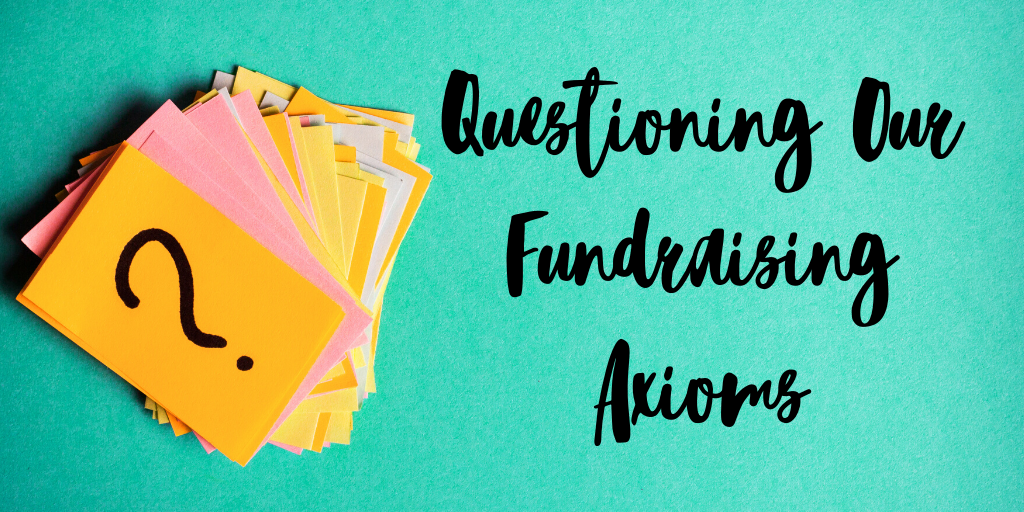


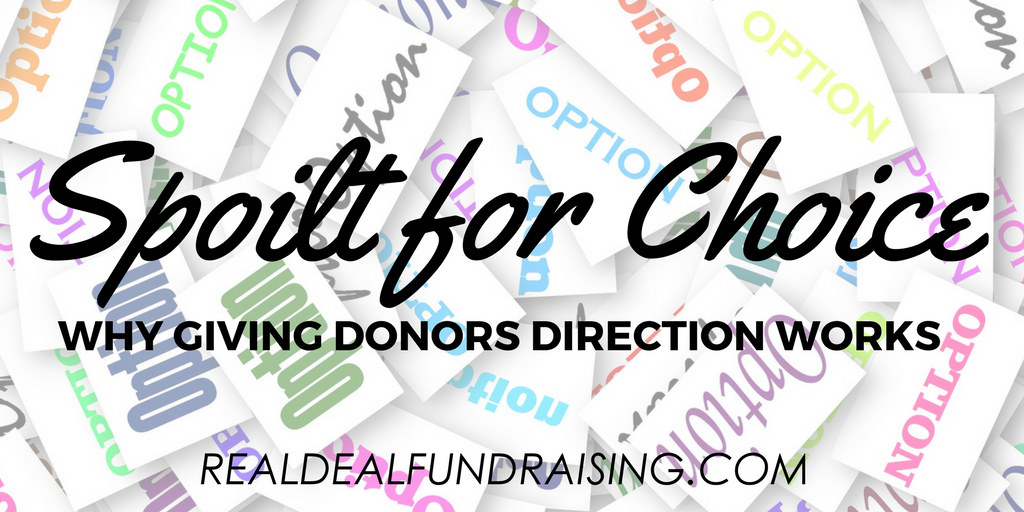
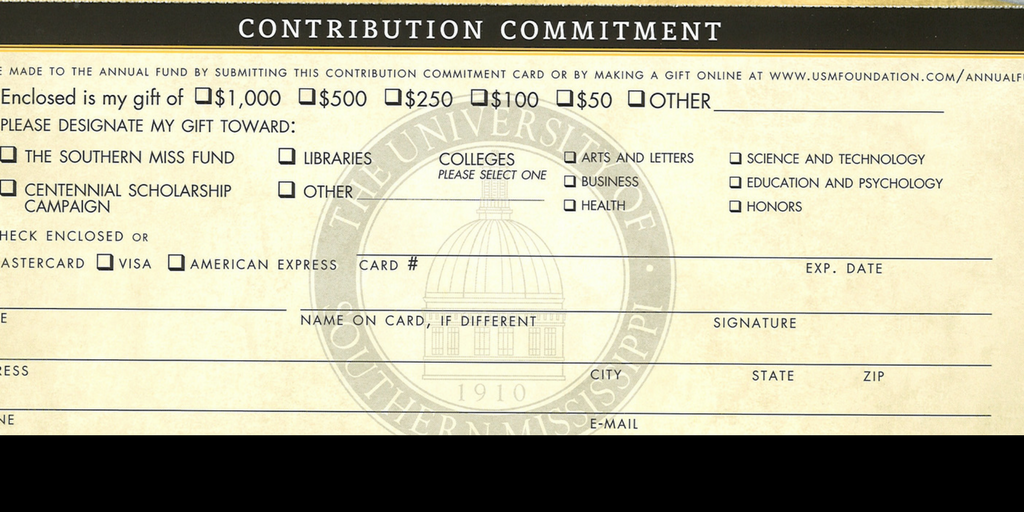
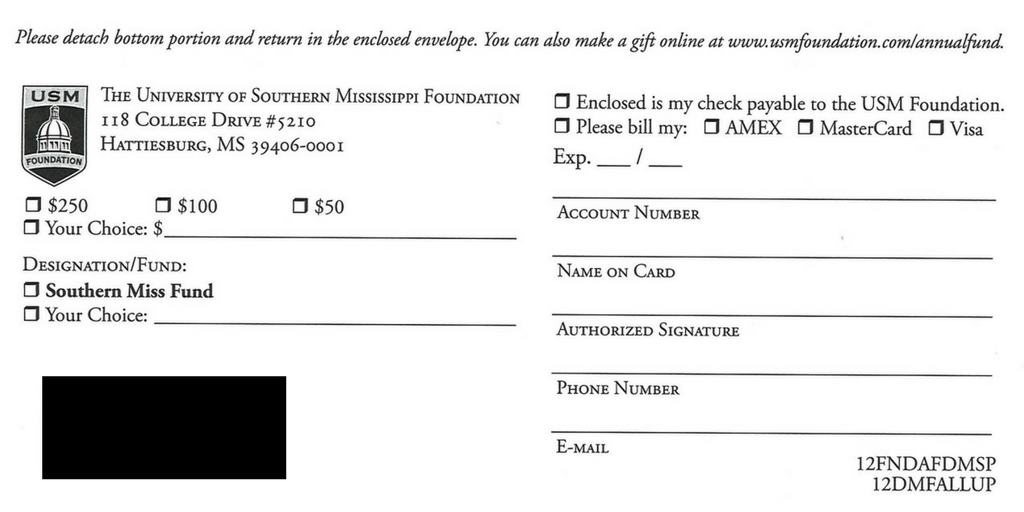
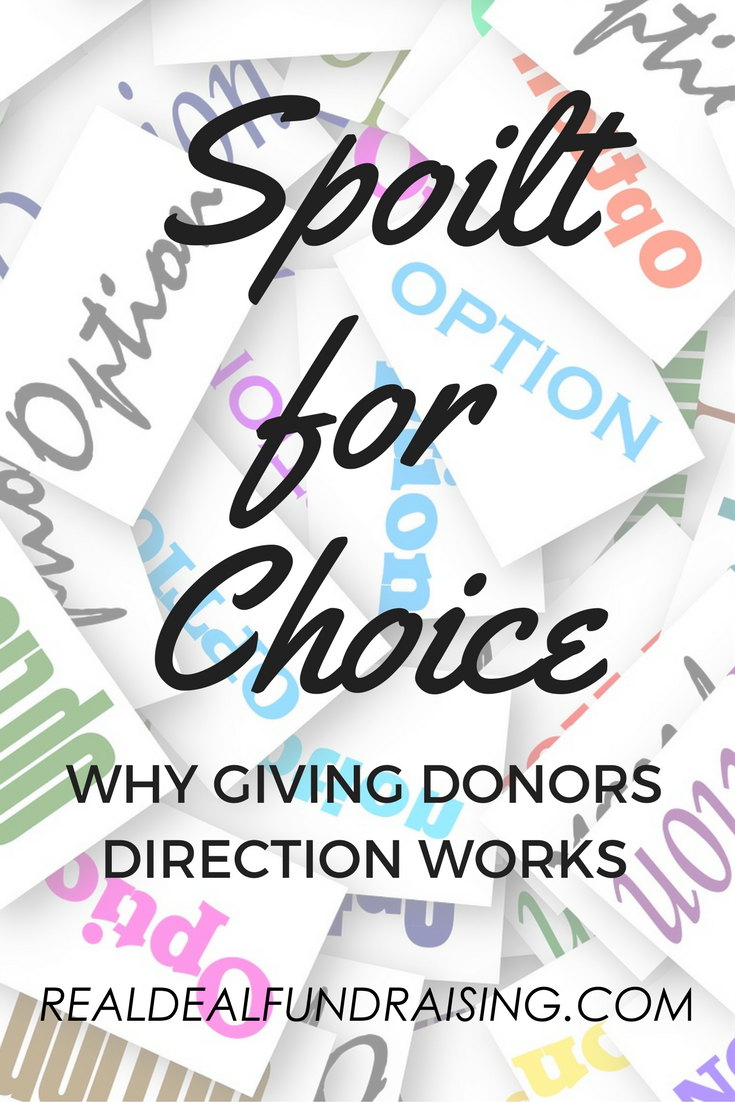
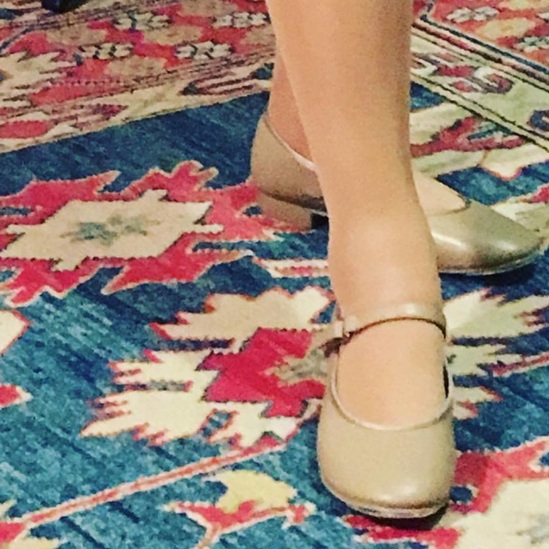

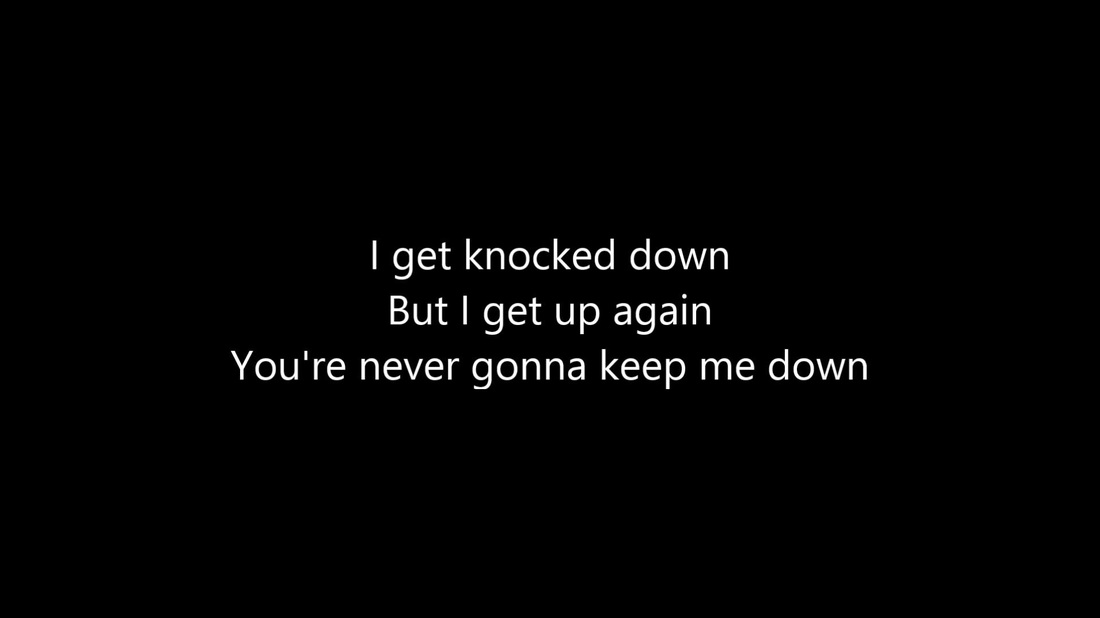

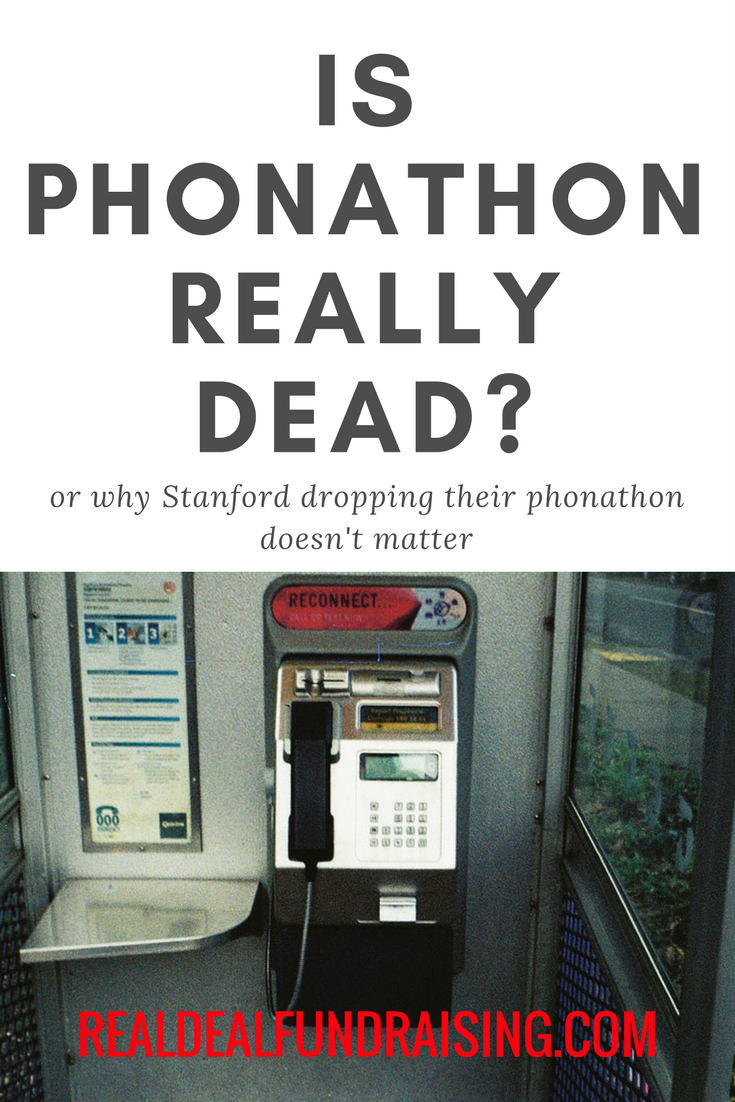
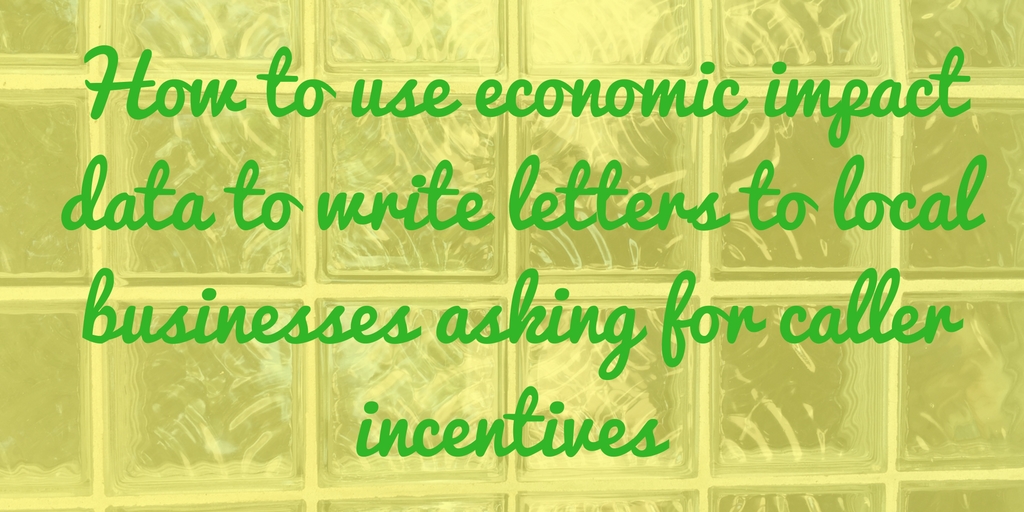
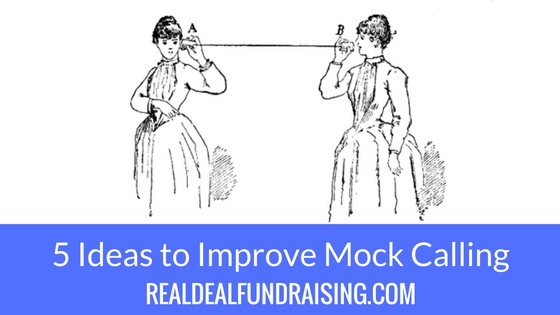


 RSS Feed
RSS Feed
